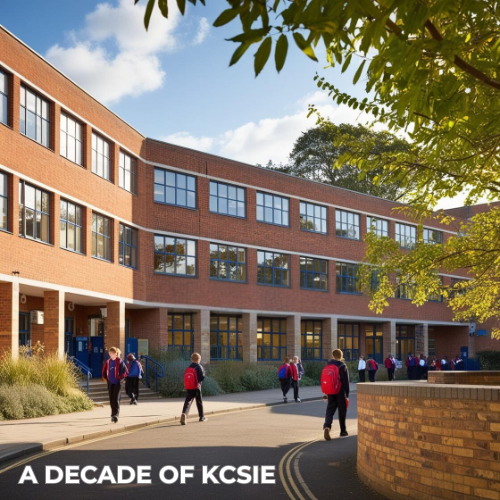Community Safeguarding – Contextual Safeguarding
for Young People within the Community
What is community safeguarding and why is it so important?
There is a perception that young people mainly spend their spare time online – multiplayer games, TikTok, Instagram, or YouTube – but whilst time on devices plays a big part in all of our lives, they actually only take up between 29% and 35% of young people’s leisure time. The rest of their time is spent on activities that include socialising with friends, travel, eating out, sports and outdoor pursuits, cultural activities and participating in clubs and teams. These are mostly activities that occur within the community, which is why schools are equally interested in community safeguarding as they are in safeguarding in schools.
Community safeguarding acknowledges that everybody in the wider community is responsible for safeguarding vulnerable individuals and requires raising awareness of safeguarding issues and knowing what to look for in order to identify signs that harm is occurring. By working together as a community, we will be able to make the places we live and spend time in safer.
Get our blogs sent straight to your inbox
Dr. Carlene Firmin (2017) continues to demonstrate the importance of expanding child protection system objectives beyond just families to recognise that young people are vulnerable to significant harm in their community and that changing the context of these areas, it will help prevent future harm.
Why harm doesn’t always just occur in the home – harm occurring within the community
Harm does not only occur to young people in the home or in school. With so much time spent in the community, with potentially less supervision, young people are at risk in a variety of ways including violence, knife crime, county lines, sexual harassment or assault, and grooming.
A number of high-profile cases have been documented, such as the Rotherham Grooming Scandal, with 1000 known victims to date. Two-thirds of girls and women aged 14 to 21 have been sexually harassed in public, making it a worryingly common issue for young women. In unique cases, during structured activities with a trusted adult, such as in a sports team, there have been multiple widely reported incidents of grooming and sexual assault.
The number of violent crimes and offences by knives and sharp instruments has increased continually in the last 10 years, with the majority of cases occurring among young people. Recent studies have shown no association between gender or ethnicity and youth violence. Instead, studies identified adverse childhood experiences and poor mental health as positively associated with youth and gang violence.
Peer-on-peer abuse often spills out of school, whether that’s unwanted sexual contact or sexual assault, threats of violence or harassment on the street or at after-school clubs and activities, online trolling, so-called ‘revenge porn’, or even stalking.
Dr. Carlene Firmin’s (2017) research – Everyone’s Invited – and the Ofsted report into sexual abuse in schools suggests that students may not readily share such information with adults as their social conditions favour them to stay silent. As a team, we always go back to Dr. Carlene’s (2020) statement outlining that in order to understand the everyday life experiences of young people and ultimately prevent future harm, we must understand the context of where harm takes place and the social rules that govern them. In order to do this, we need to listen to our young people authentically.
As outlined in our previous blog, significant data supports the view that for a young person to disclose any form of risk to their own safety or that of their peers takes immense courage and trust.
Community safeguarding – a form of contextual safeguarding
To help prevent peer-on-peer abuse and understand how to respond to it, schools and colleges can adopt a contextual safeguarding approach to community safeguarding. This means considering the location and culture of your school or college and assessing the risks that young people may be exposed to, both inside and outside of the school or college community. This includes schools and neighbourhoods, where young people interact with peers and other members of their communities.
Contextual safeguarding takes into account all forms of peer-on-peer abuse across a wide spectrum of behaviours. It recognises the different relationships that young people have outside of their family and that these relationships may act as protective factors but may also present a risk to harm. Without the influence and existence of the contextual safeguarding framework, we would have limited prospects to understand the extra-familial experiences of young people and or have the opportunity to present future harm through understanding the context of young people’s lives.
The four domains of Contextual Safeguarding are:
- Target: Identify, assess, prevent and intervene with the social conditions of abuse (i.e. targeted the nature of the contexts in which abuse occurred rather than just the individuals affected by it).
- Legislative Framework: Incorporate extra-familial contexts into child protection and safeguarding processes (which were traditionally focused on families)
- Partnerships: Build partnerships with sectors and individuals who managed extra-familial settings where young people spent their time (such as those responsible for the management of schools, transport services, shopping centres, libraries, and take-away shops).
- Outcome Measures: Measured its impact in relation to a change in the nature of the contexts where young people were vulnerable to abuse or harm (rather than just focusing on a change in the behaviour of individuals who continued to spend time in harmful spaces).”
Community safeguarding amongst MATs
As outlined in one of our previous blogs ‘How can schools benefit from working together’, there is great potential for schools situated near each other and multi-academy trusts to share more information between each other, to intervene earlier and prevent future harm.
This means students traveling through local areas, sharing the same walks, buses, or trains to and from school may have the same negative experiences to share but no way of reporting their concerns, nor the confidence to speak up about these contextual safeguarding matters.
Gathering vital reports on hotspot areas, times of day these incidents are occurring, and what age or year groups are experiencing this, means schools and local authorities can work more effectively together to intercept and prevent future harm in the area.
This will not only develop safer schools, but also safer communities as the system allows for information to be shared between multi-academy trust schools in the same catchment area, and with police and social care. This will allow for proactive safeguarding measures to be in place and the ability to track the effectiveness of measures put in place.

Young people’s participation in community safeguarding
Contextual safeguarding within the community is going to be essential if young people are to be protected, and schools as well as parents, government organisations, and local law enforcement need to take a ‘whole community approach’ to ensure that this happens. This will only be possible, however, if young people themselves feel empowered enough to come forward to report these issues.
The Student Voice has found that a successful approach to community safeguarding is to make it an extension of safeguarding reporting within the school. Schools and colleges live and/or work with young people daily, and therefore have this opportunity to listen and understand the unique experiences they have, in an authentic way. Schools often have strong links to the community but are often aware that there are areas of the community they have blind spots in.
Giving young people an interactive way of reporting issues in local parks, shopping or leisure areas, sports or after-school clubs, and on local transport links breaks down the barriers of needing to physically report something face to face if they do not feel comfortable disclosing a concern that way. The school can then involve necessary agencies such as the police, social services, transport authorities, or sporting bodies, or even members of the community such as local business owners, who might be able to assist in monitoring or tackling the issue.
Multi-Academy Trusts using Community and Contextual Safeguarding
We are very excited by the potential of community safeguarding, especially in early help and preventing future harm. Several schools, and particularly multi-academies, are utilising the information gathered from their students through our school and community maps to share information between schools situated locally.
Creative Education Trust, which is launching The Student Voice tool to their entire group of academies this autumn term, is focusing on enabling early help and will be utilising the community (surrounding areas) map to increase information sharing between schools in the same region.
Local authorities using contextual safeguarding to protect the community – The Wirral
Over 2000 children and young people in Wirral participated in the contextual safeguarding survey, supported by their school, youth club or community group.
Recognising that young people’s needs and experiences are very different as they get older confirms the impact contextual data in real-time can have in preventing future harm in our communities. The survey was a collaborative strategy between safeguarding partners and led by; Wirral Council, Merseyside Police and Wirral Clinical Commissioning Group (CCG). It also provides a framework for agencies to follow together, to support young people who have been harmed and tackle any individuals who have caused that harm.
Lorna Quigley, Director of Quality and Safety (Chief Nurse) at Wirral CCG, said: “Traditionally, safeguarding services were developed and structured to address risk within the family, but our own consultation has shown that young people’s needs and experiences are very different as they get older.”
“Risks outside the home or family become more relevant and understanding the daily lived experience of our children and young people is key to reducing these risks and improving outcomes.”
“It’s also vital that our statutory, public and private workforces that may work with young people are equipped with the ability to spot and respond to teens who may be at risk or require support.”
“As such, Wirral will adopt a contextual safeguarding framework approach to adolescent safety.”
In Summary
The use of community safeguarding within the wider community has the potential to dramatically improve the way in which education, police and social care can work together to successfully provide safer communities for young people, and educate students to become responsible and active participants in building safer communities. Communities will not only have the opportunity to enhance real-time safeguarding provision, but they will also create phenomenal, positive learning opportunities and experiences for young people to take into adulthood.
We recognise the immense potential of investing in young people through the provision of brave spaces. We operate with an awareness of the varied life experiences that students have and strive to respect and understand their social rules. This creates a safer community and a safer future for our young people.





